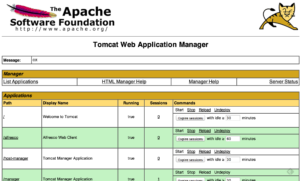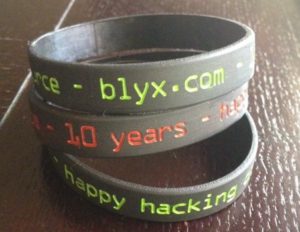Project was moved to Github!
Please go to https://github.com/toniblyx/alfresco-backup-and-recovery-tool for downloads, questions, issues, suggestions or feedback. Thanks!
Here you go, first release of the Alfresco Backup and Recovery Tool (Alfresco BART). An Apache 2.0 licensed tool for backup and restore of Alfresco ECM.
DESCRIPTION
Alfresco BART is a tool written in shell script on top of Duplicity for Alfresco backups and restore from a local file system, FTP, SCP or Amazon S3 of all its components: indexes, data base, content store and all deployment and configuration files. It should runs in most Linux distributions, for Windows you may use Cygwin (non tested yet).
Brief description of its features: full and incremental backups, backup policies, backup volume control, encryption with GPG, compression. Also it has a restore wizard with shortcuts for quick restore of some key components (alfresco-global.properties and more).
DISCLAIMER
This is an initial version, it has bugs and needs many improvements, please take care 🙂
FEATURES
Features in this version (v0.1):
- 5 different modes of work: backup, restore, verify, collection and list
- backup: runs an incremental backup or a full if first time or configured
- restore: runs the restore wizard
- verify: verifies the backup
- collection: shows all the backup sets in the archive
- list: lists the files currently backed up in the archive
- Full and incremental backups.
- Backup policies:
- Periodicity: number of days of every full backup, if not backup found it does a full
- Retention: keep full or incremental copies, clean old backups.
- Control of number of moths to remove all backups older than or backup retention period.
- Separated components (backup sets or groups), ability to enable or disable any set (cluster and dedicated search server aware), all backup sets supported are:
- Indexes (SOLR or Lucene)
- Data base (MySQL, PostgreSQL and Oracle)
- Content Store plus deleted, cached and content store selector (optional).
- Files: all configuration files, deployments, installation files, etc.
- Restore wizard with support to:
- restore a full backup (all sets)
- given backup set
- restore from a given date or days, month, year ago
- restore alfresco-global.properties from a point in time
- Backup volume control:
- All backups collections are split in a volume size 25MB by default, this can help to store your backup in tapes or in order to upload to a FTP, SCP or S3 server.
- Backup to different destinations:
- Local filesystem
- Remote FTP or FTPS server
- SCP server (should have shared keys already configured, no authentication with user and password supported)
- Amazon S3
- Encryption with GnuPG, all backup volumes are encrypted, this feature is configurable (enable or disable).
- Compression, all backup volumes are compressed by default
- Log reporting, Alfresco BART creates a log file each day of operation with in a report of any activity.
DEPENDENCES
- Duplicity 0.6 (with boto and fabric)
- Python
- GnuPG
- NcFTP
- librsync
- mysqldump for MySQL backup
- pg_dump for PostgreSQL backup
- exp for Oracle backup
TODO
- TEST, TEST and TEST with JBOSS, MySQL, Oracle, S3, FTPs, SCP, etc.
- Add more input and task controllers (and configuration, first run).
- Restore single repository file.
- Snapshots (LVM if exist, AWS if exist).
- Support for MS SQL Server.
- Configuration wizard (shell).
- Share admin panel configuration page as main point to configure more options related to backup (eager, cleaner, index backup, trascan cleaner, etc.).
- Custom logging control and reporting improvement.
DOWNLOADS and INSTALLATION
Most recent information about tool and latest code is available in:
http://blyx.com/alfresco-bart
Please report bugs and improvements to: reverse moc.xylb@inot


 Quería acabar este apasionante 2012 escribiendo un post a modo de celebración. Este mes de diciembre
Quería acabar este apasionante 2012 escribiendo un post a modo de celebración. Este mes de diciembre 